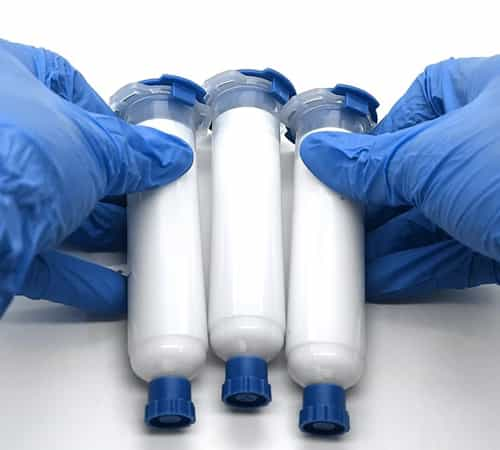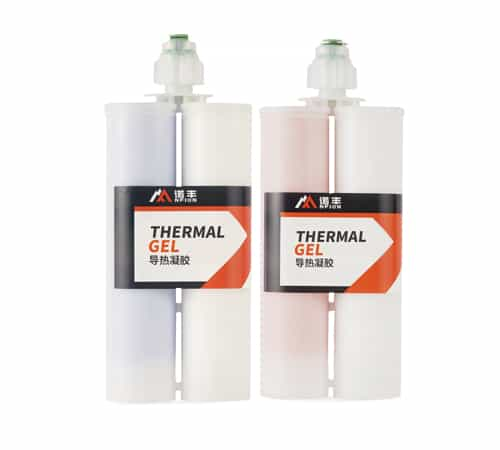
Lidar, as a core component of modern autonomous vehicles, robots, and automation systems, is a remote sensing technology used for measuring distances by emitting laser pulses towards targets and measuring the reflected light. This process necessitates precise temperature control, requiring high-performance thermal management solutions to ensure stable operation and guarantee the stability and accuracy of the lidar system.
Thermal silicone pads play a critical role in lidar applications, primarily addressing heat dissipation issues within lidar modules, particularly for heat-generating components such as FPGAs (Field-Programmable Gate Arrays). With their exceptional thermal conductivity and excellent insulating properties, thermal silicone pads emerge as an ideal choice for lidar thermal management.

Key functions of thermal silicone pads in lidar applications include:
1. Thermal Management & Heat Path Optimization:
Heat Transfer Medium: During operation, lidar generates substantial heat, especially from high-speed electronic components like FPGAs. Acting as a thermal interface material (TIM), the thermal silicone pad is placed between these heat-generating elements and the heat sink, effectively filling microscopic gaps and uneven surfaces to establish a continuous and efficient thermal conduction pathway. This pathway swiftly transfers heat generated by the components to the heat sink, which subsequently dissipates it into the environment via natural convection, forced air cooling, or other means.
2. Reduced Thermal Resistance:
Fill Capability & Flexibility: Soft and pliable, thermal silicone pads exhibit good elasticity and compressibility, allowing them to conform closely to the surfaces of both heat-generating components and heat sinks. They effectively fill and eliminate air gaps between contact surfaces, thereby reducing thermal resistance caused by air's poor thermal conductivity. This characteristic ensures efficient heat transfer, preventing localized overheating that could impair device performance and longevity.
3. Precise Temperature Control: In lidar systems, fluctuations in temperature can affect laser wavelength and intensity, compromising measurement accuracy. Thermal silicone pads facilitate more uniform heat conduction, contributing to the maintenance of a stable internal temperature within the lidar system.
4. Electrical Insulation: Thermal silicone pads typically offer good electrical insulation, preventing short circuits or leakage currents that might arise due to heat accumulation, thereby enhancing system safety and reliability.
5. Weather Resistance & Chemical Stability: These pads exhibit robust weather resistance and chemical stability, maintaining their performance under various environmental conditions, catering to lidar's diverse application scenarios.
6. Adaptability:
Thickness Selection & Shock Resistance: Thermal silicone pads come in a range of thicknesses (usually from 0.3mm to 15mm), enabling flexible configuration based on actual cooling needs and available assembly space. For vehicle-mounted lidar applications subjected to vibration or shock, models reinforced with fiberglass cloth can be chosen to provide additional mechanical stability and shock resistance, safeguarding sensitive electronic components from stress-induced damage.
7. Special Requirements Fulfillment:
Low Volatility & Low Stress: Addressing lidar's potential exposure to high temperatures, high vacuum, or sensitivity to chemicals, specific low-volatile thermal silicone pads (such as NF150-1000) feature lower oil extraction rates and volatility, offering not only superior cooling performance but also preventing contamination or physical harm to the lidar's delicate internal components. Such products also possess low-stress characteristics, mitigating any adverse effects on chips or other components caused by material shrinkage or expansion.
8. Brand & Technology Selection:
Industry Recommendations & Alternatives: In lidar cooling applications, multiple models of thermal silicone pads from Nfion Thermal have been recommended, such as those in the NF150 series (e.g., NF150-500, NF150-600, NF150-700, NF150-800, NF150-1000). These products are favored for their commendable thermal conductivity, softness, and gap-filling capabilities. Additionally, alternatives like the two-part thermally conductive adhesive NF150-400NJ, featuring high-voltage insulation and V-0 flame retardancy, are particularly suited for vehicle radar cooling needs and have already entered the pilot production stage in real-world projects.

In summary, thermal silicone pads play a vital role in lidar applications by effectively dissipating heat, optimizing heat transfer, minimizing thermal resistance, ensuring precise temperature control, accommodating complex environmental conditions, and meeting specific technical requirements. Designers can select the most suitable thermal silicone pad product from a variety of brands and models based on their actual application needs to achieve optimal cooling performance, ultimately ensuring the stable operation and long-term reliability of lidar systems.




 CN >
CN >



